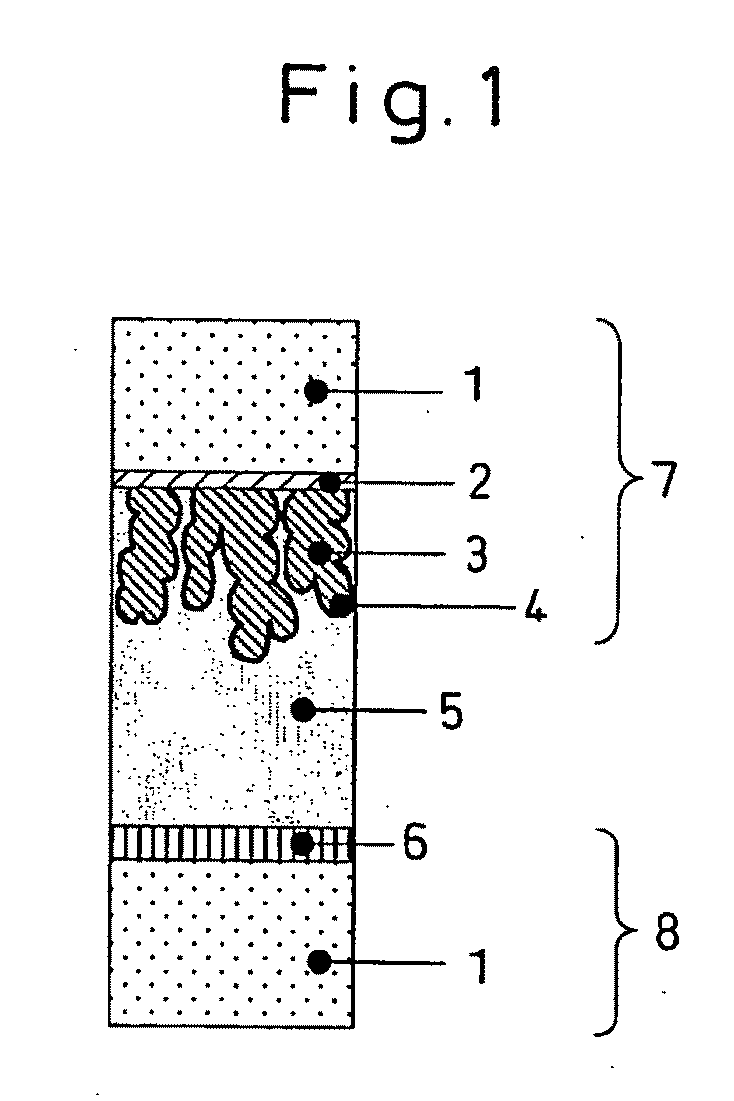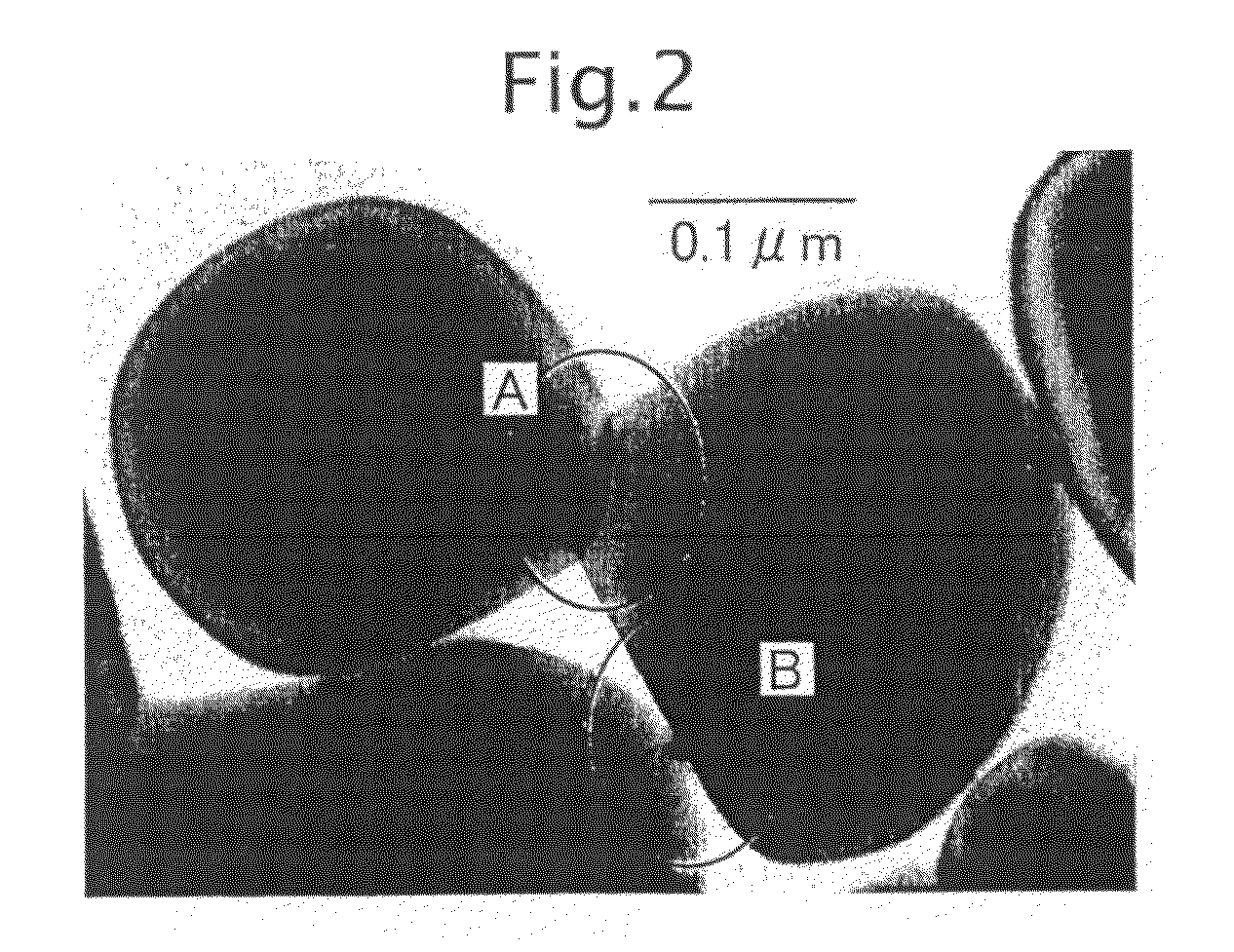Metal Oxide Dispersion, Metal Oxide Electrode Film, and Dye Sensitized Solar Cell
a solar cell and metal oxide technology, applied in the field of metal oxide electrode film, dye sensitized solar cells, can solve the problems of reducing the performance of the cell as a whole, the inability to form a low-resistance titanium dioxide electrode capable of satisfactorily serving as a porous electrode, and the inability to enhance adhesion through baking, so as to achieve the effect of decreasing the cell performan
- Summary
- Abstract
- Description
- Claims
- Application Information
AI Technical Summary
Benefits of technology
Problems solved by technology
Method used
Image
Examples
example 1
Dispersion Comprising Ethanol
[0275]Into a 800 cm3-volume polyethylene container (φ96×133 mm) of a ball mill (AV, manufactured by Asahi Rika Seisakusho), 3 g of vapor-phase-process titanium dioxide (Supertitania (registered trademark) G-2, produced by Showa Denko K.K.) having an average primary particle diameter of 500 nm, 9 g of titanium dioxide (Supertitania (registered trademark) F-4, produced by the same company) having an average primary particle diameter of 30 nm, 30 g of the liquid-phase-process titanium dioxide sol, 2 g of an aqueous 1% N-vinylacetamide-sodium acrylate copolymer (VIAC GE-195, produced by Showa Denko K.K.) solution, 6 g of water, 50 g of ethanol (pure chemical) and 500 g of 3φ zirconia balls were charged, and mixed at a rotation speed of 80 rpm for 12 hours to obtain a titanium dioxide liquid dispersion.
[0276]Two sheets of transparent electrically conducting resin substrates (OTEC-110, produced by Tobi Co., Ltd., thickness: 125 μm) were prepared, and on one su...
example 2
Dispersion Comprising Butanol
[0279]The evaluation of contact angle, and the production and evaluation of a solar cell were performed in the same manner as in Example 1 except for using a mixed solvent comprising 40 g of 2-methyl-2-propanol and 10 g of ethanol in place of 50 g of ethanol. However, the dispersion obtained had a high viscosity and could be coated by the squeegee method.
example 3
Dispersion Comprising Sodium Acrylate Polymer
[0280]The evaluation of contact angle, and the production and evaluation of a solar cell were performed in the same manner as in Example 1 except for using an aqueous 0.2 mass % sodium polyacrylate solution in place of the aqueous 1 mass % N-vinylacetamide-sodium acrylate copolymer solution.
PUM
| Property | Measurement | Unit |
|---|---|---|
| contact angle | aaaaa | aaaaa |
| average primary particle diameter | aaaaa | aaaaa |
| average primary particle diameter | aaaaa | aaaaa |
Abstract
Description
Claims
Application Information
 Login to View More
Login to View More - R&D
- Intellectual Property
- Life Sciences
- Materials
- Tech Scout
- Unparalleled Data Quality
- Higher Quality Content
- 60% Fewer Hallucinations
Browse by: Latest US Patents, China's latest patents, Technical Efficacy Thesaurus, Application Domain, Technology Topic, Popular Technical Reports.
© 2025 PatSnap. All rights reserved.Legal|Privacy policy|Modern Slavery Act Transparency Statement|Sitemap|About US| Contact US: help@patsnap.com



